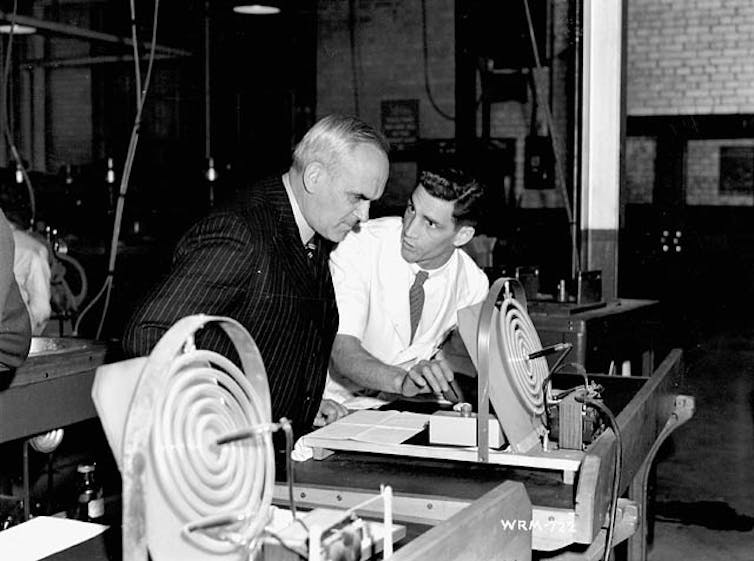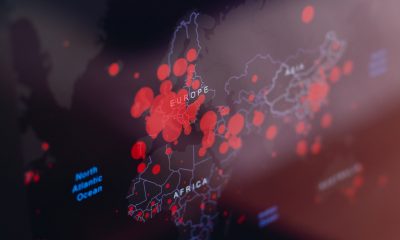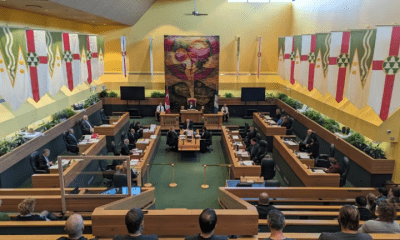Canada News
7 lessons Canada should use from WW2 to fight the climate emergency

If our governments don’t behave as though climate change is an emergency — or they send contradictory messages by approving new fossil fuel infrastructure — they are telling the public that it is not one. (File Photo: Diego PH/Unsplash)
Canada’s approach to climate change for the past 30 years is simply not working. Greenhouse gas emissions in the year 2018 (the last year for which we have statistics) were almost exactly where they were in the year 2000.
We have run out the clock with distracting debates about incremental changes. A new approach is needed.
I have spent the last year and a half writing a book, A Good War: Mobilizing Canada for the Climate Emergency, about Canada’s Second World War experience, searching for lessons for how to confront the climate crisis and quickly transition off fossil fuels.
Our wartime experience carries a helpful — and indeed hopeful — reminder that we have done this before. We mobilized in common cause across society to confront an existential threat. And in doing so, we retooled our entire economy in a few short years.
But to execute a successful battle, we need a plan. Here then are seven key strategic lessons that emerge from our Second World War mobilization.
1. Adopt an emergency mindset
When we approach a crisis by naming the emergency and the need for wartime-scale action, it creates a new sense of shared purpose. It renews unity across Canada’s confederation, and liberates a level of political action that previously seemed impossible.
Economic ideas once deemed off-limits are newly considered. And we become collectively willing to see our governments adopt mandatory policies, replacing voluntary measures that merely incentivize and encourage change with clear timelines and regulatory fiat to drive change.
2. Rally the public at every turn
Many assume that at the outbreak of the Second World War everyone understood the threat and was ready to rally. But that was not so.
It took leadership to mobilize the public. In frequency and tone, in words and in action, the climate mobilization needs to look and sound and feel like an emergency.
If our governments don’t behave as though climate change is an emergency — or they send contradictory messages by approving new fossil fuel infrastructure — they are telling the public that it is not one.
Read more:
Greta Thunberg’s radical climate change fairy tale is exactly the story we need
3. Inequality is toxic to mass mobilization
A successful mobilization requires that people across class, race and gender share a common cause. The public must have confidence that the rich, middle- and modest-income people are all making sacrifices.
During the First World War, inequality undermined such efforts. Consequently, at the outset of the Second World War, the federal government took bold steps to lessen inequality and limit excess profits.
Such measures are needed again today. Moreover, a 2019 survey of 2,000 Canadians shows that when ambitious climate action is linked to tackling inequality, support goes dramatically up.
4. Create the economic institutions to get the job done
During the Second World War the Canadian economy and its labour force pumped out planes, military vehicles, ships and armaments at a speed and scale that is simply mind-blowing.
The Canadian government (under the leadership of cabinet minister C.D. Howe) established 28 Crown corporations to meet the supply and munitions requirements of the war effort. The private sector had a key role to play in that economic transition, but vitally, it was not allowed to determine the allocation of scarce resources. In a time of emergency, we don’t leave such decisions to the market.


(National Film Board of Canada. Photothèque. Library and Archives Canada), CC BY
Howe’s department undertook detailed economic planning to ensure wartime production was prioritized, conducting a national inventory of wartime supply needs and production capacity and coordinating the supply chains of all core war production inputs (machine tools, rubber, metals, timber, coal, oil and more).
The climate emergency demands a similar approach. We must again conduct an inventory of conversion needs, determining how many heat pumps, solar arrays, wind farms, electric buses, etc., we will need to electrify virtually everything and end our reliance on fossil fuels. And we will need a new generation of Crown corporations to then ensure those items are manufactured and deployed at the requisite scale.
5. Spend what it takes to win


(Library and Archives Canada, C-091436), CC BY
A benefit of an emergency mentality is that it forces governments out of an austerity mindset and liberates the public purse. This year, in response to the COVID-19 pandemic, Canada’s federal debt-to-GDP ratio will rise to about 50 per cent. At the end of the Second World War, it was 108 per cent.
To finance the war effort, the government issued new public Victory Bonds and new forms of progressive taxation were instituted. Yet these new taxes and what remains to this day historic levels of public debt did not produce economic disaster. On the contrary, they heralded an era of record economic performance.
As we confront the climate emergency, financing the transformation before us requires that we employ similar tools.
6. Indigenous leadership, title and rights
Indigenous Peoples played an important role in the Second World War. Today, their collective role in successfully confronting the climate crisis is pivotal.
As mainstream politicians dither on meaningful and coherent climate action, the assertion of Indigenous title and rights is slowing and blocking new fossil fuel projects. Some of Canada’s most inspiring renewable energy projects are also happening under First Nations’ leadership. It is imperative to both honour and support such efforts.
7. Leave no one behind
The Second World War saw over one million Canadians enlist in military service and even more employed in munitions production (far more than are employed in the fossil fuel industry today). After the war, they were all reintegrated into a peacetime economy, including income support to housing to post-secondary training for returning soldiers.
The ambition of these initiatives provides a model for what a just transition can look like today for all workers whose economic and employment security is currently tied to the fossil fuel economy, with a special focus on those provinces and regions most reliant on oil and gas production.
As I read the latest scientific warnings, I’m afraid. I feel deep anxiety about the state of the world we are leaving to our children and beyond. In truth, we don’t know if we will win this fight. But it is worth recalling that those who rallied in the face of fascism 80 years ago likewise didn’t know if they would win.
During the war’s early years, the outcome was far from certain. Yet that generation rallied and surprised themselves by what they could achieve. That’s the spirit we need today.![]()
![]()
Seth Klein, Adjunct Professor, Urban Studies Program, Simon Fraser University
This article is republished from The Conversation under a Creative Commons license. Read the original article.





















